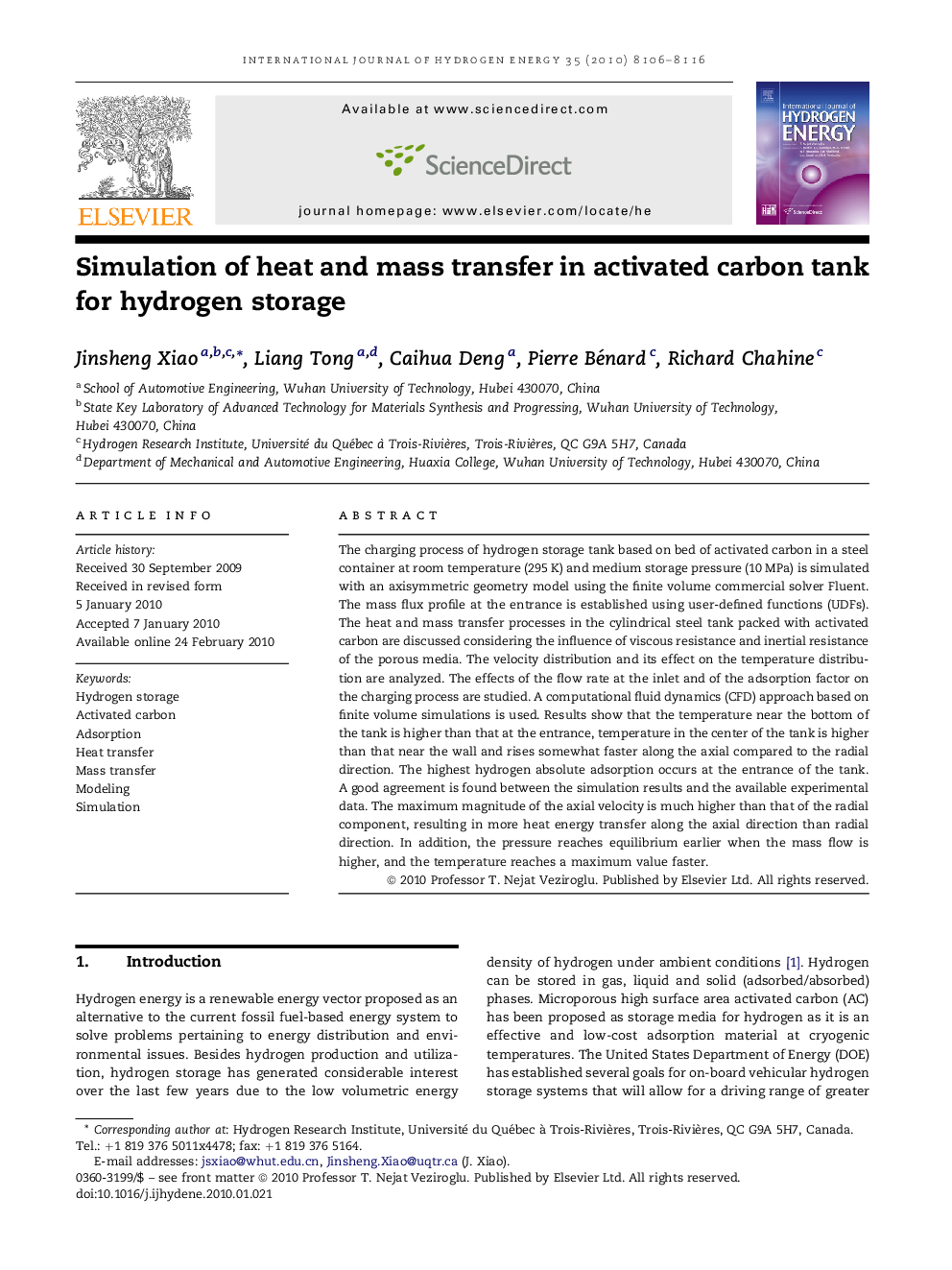| Article ID | Journal | Published Year | Pages | File Type |
|---|---|---|---|---|
| 1277995 | International Journal of Hydrogen Energy | 2010 | 11 Pages |
The charging process of hydrogen storage tank based on bed of activated carbon in a steel container at room temperature (295 K) and medium storage pressure (10 MPa) is simulated with an axisymmetric geometry model using the finite volume commercial solver Fluent. The mass flux profile at the entrance is established using user-defined functions (UDFs). The heat and mass transfer processes in the cylindrical steel tank packed with activated carbon are discussed considering the influence of viscous resistance and inertial resistance of the porous media. The velocity distribution and its effect on the temperature distribution are analyzed. The effects of the flow rate at the inlet and of the adsorption factor on the charging process are studied. A computational fluid dynamics (CFD) approach based on finite volume simulations is used. Results show that the temperature near the bottom of the tank is higher than that at the entrance, temperature in the center of the tank is higher than that near the wall and rises somewhat faster along the axial compared to the radial direction. The highest hydrogen absolute adsorption occurs at the entrance of the tank. A good agreement is found between the simulation results and the available experimental data. The maximum magnitude of the axial velocity is much higher than that of the radial component, resulting in more heat energy transfer along the axial direction than radial direction. In addition, the pressure reaches equilibrium earlier when the mass flow is higher, and the temperature reaches a maximum value faster.
